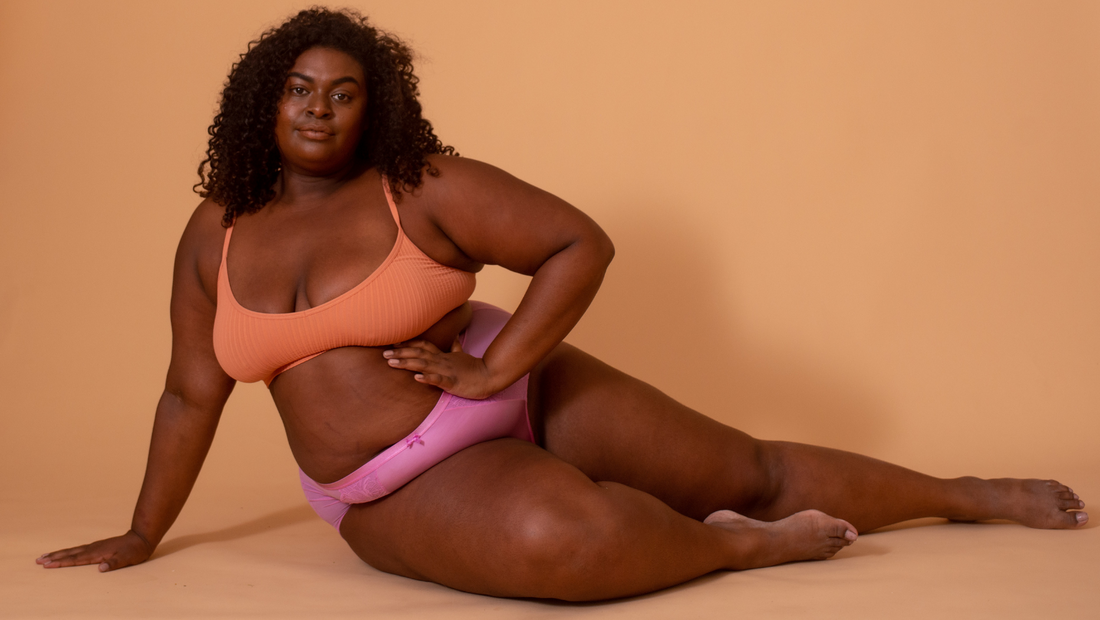Momotaro Apotheca and its materials are not intended to treat, diagnose, cure or prevent any disease. All material on Momotaro Apotheca is provided for educational purposes only. Always seek the advice of your physician or other qualified healthcare provider for any questions you have regarding a medical condition.

Do I Have a Yeast Infection or BV?
Share
Do I have BV or a yeast infection???
If you’re anything like us you’ve Googled this question more times than you can count. But hey, who hasn’t? Vaginal infections are SO common, with yeast infections and BV being the main culprits. In fact, 75% of people with vulvas will get at least one yeast infection in their lifetime and 35% will get BV. Which really isn’t surprising, our vaginal microbiomes can easily be thrown off by our diets, sex, hormonal shifts, the wind changing direction…
But just because they’re common doesn’t make them pleasant…to say the least. When you have a yeast infection or BV you want it gone ASAP, and the first step to treating these infections is knowing which one you have. Here lies the problem. BV and yeast infections share many overlapping symptoms and it can be damn near impossible to tell the difference if you don’t know what to look out for.
Let’s break down the differences between BV and yeast infections so you can start to heal, not just deal.
What are they?
The major difference between BV and yeast infections is: BV is a bacterial infection and a yeast infection is a fungal infection. BV occurs when ‘bad’ bacteria in the vagina (scientifically named gardnerella vaginalise) overgrows and disrupts the vaginas natural pH levels. Yeast infections occur when candida fungus (most commonly candida albicans) overgrows inside of the vagina.
Your full system solution to fight off yeast infections: Shop The Yeast Infection Bundle
What causes them?
Yeast infections and BV can have many potential triggers in common such as: using harsh vaginal health products (don’t get us started on our disdain for fem-care), douching, poor diet habits, and smoking. But there are a few that are more common in one or the other.
When it comes to BV, some people with vaginas naturally produce lower amounts of Lactobacillus, which is a beneficial bacteria that helps keep the vaginal microbiome balanced. This is oftentimes what causes individuals to suffer from chronic BV. One of the biggest external triggers is sex. Everything from lubes, unwashed hands, and cum can disrupt the vaginal pH. But don’t let that scare you! Using protection while having sex and practicing sexual aftercare can decrease your risk for developing this infection.
Your one-stop-shop for BV prevention: Shop The Bacterial Vaginosis Bundle
Yeast infections occur in high amounts in individuals that are taking hormonal contraceptives (like The Pill), are pregnant, have diabetes, or have suppressed immune systems. Note that not all people that fit into these categories will develop yeast infections, especially when preventative measures are being practiced. Yeast infections can also spring up after an increased intake of sugar or alcohol. (yeah, this one hurt us too) Yeast feeds off of sugar, so things like pastries, cocktails, and simple carbohydrates break down and promote yeast growth. Just remember, everything in moderation!
*BV and yeast infections can occur due to all of the listed reasons.
Read More: What Causes Vaginal Infections?
What are their symptoms?
This is where things start to get tricky. Again, many of the symptoms for BV and yeast infections can overlap, which can make determining which infection you have pretty damn difficult. Many of the most common and ambiguous symptoms include: vaginal itching, irritation, and discomfort, pain during sex, and vulva swelling and redness. However, discharge and odor is where you will see the biggest difference between BV and yeast infections.
BV discharge tends to be a gray(ish) color, with a runny and thin consistency. The smell of BV discharge also makes it unique. It tends to have a strong, pungent smell.
Yeast infection discharge on the other hand is white(ish), thick, and possibly clumpy. But it normally isn’t accompanied by a strong smelling odor or any odor at all.
Soothe common vaginal symptoms: Shop Salve
How are they treated?
Good news: both BV and yeast infections are fairly easy to treat! For BV you can normally be prescribed antibiotic oral tablets or gels or creams by your gyno or general health practitioner. These antibiotics normally run for 7 days. For yeast infections your provider may prescribe you an antifungal medication for three to seven days or a single oral dose of fluconazole.
*note: Antibiotics can disrupt your vaginal microbiome, so make sure you’re practicing preventive vaginal care during and after use.
While we’re literally sighing with relief that these infections are treatable, not getting them in the first place is obviously the ideal. That’s why we create certified organic vaginal care products that systematically address symptoms associated with common vulvovaginal issues like BV and yeast infections. Our holistic approach looks to address the source of the problem, rather than temporarily relieving symptoms so you (and your vagina) can feel your best!
Further Reading:
10 Tips For Improving Your Vaginal Health
How to Prevent Vaginal Infections
Let's Talk About Vaginas: Yeast Infections
Let's Talk About Vaginas: Bacterial Vaginosis

